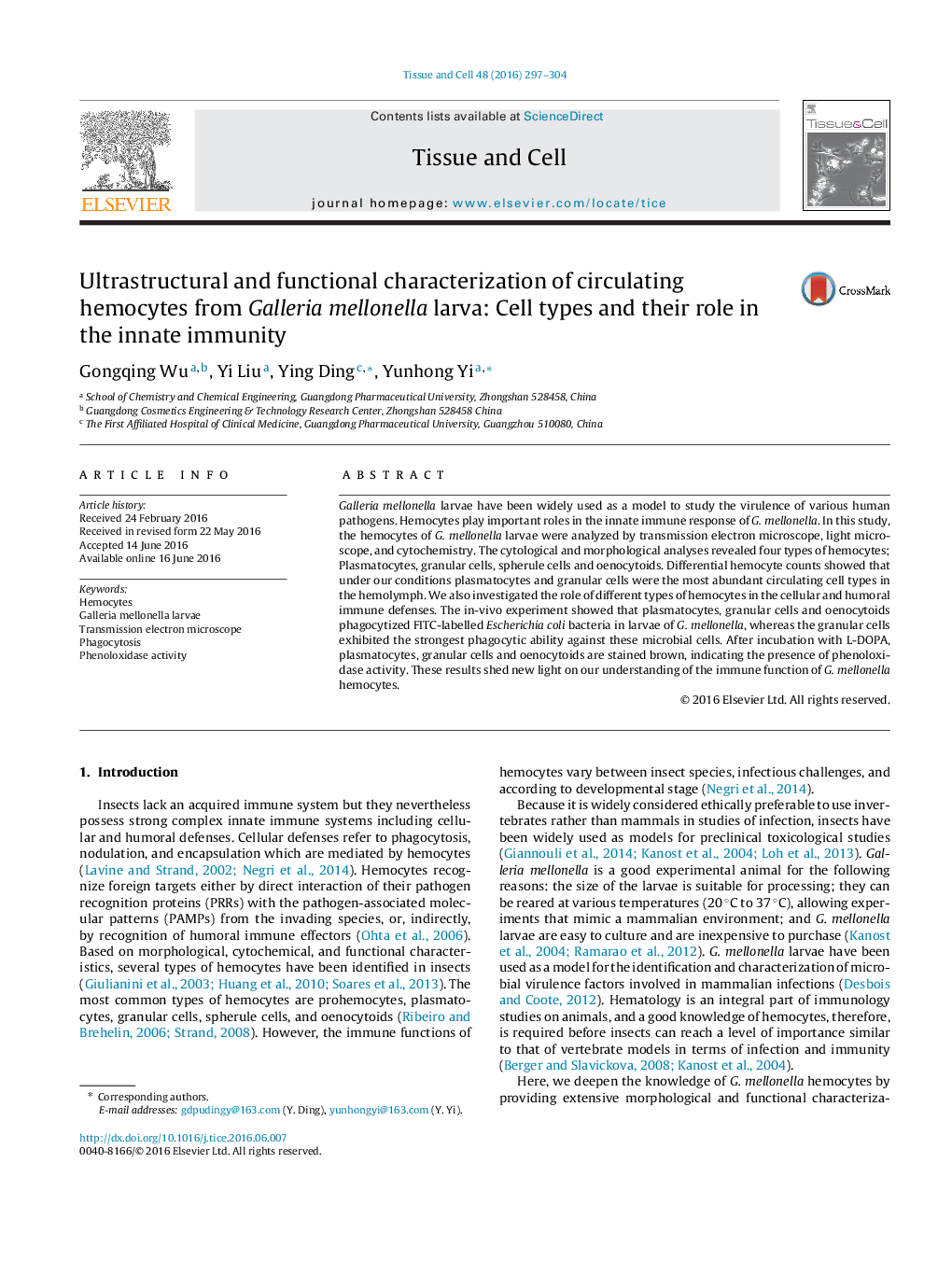| Article ID | Journal | Published Year | Pages | File Type |
|---|---|---|---|---|
| 2203482 | Tissue and Cell | 2016 | 8 Pages |
•Four types of hemocytes were identified in Galleria mellonella larvae.•Plasmatocytes and granular cells were the most abundant circulating cell types in the larvae.•Plasmatocytes, granular cells and oenocytoids of the larvae are involved in phagocytosis.•Oenocytoids, granular cells and plasmatocytes from larvae of G. mellonella have PO activity.
Galleria mellonella larvae have been widely used as a model to study the virulence of various human pathogens. Hemocytes play important roles in the innate immune response of G. mellonella. In this study, the hemocytes of G. mellonella larvae were analyzed by transmission electron microscope, light microscope, and cytochemistry. The cytological and morphological analyses revealed four types of hemocytes; Plasmatocytes, granular cells, spherule cells and oenocytoids. Differential hemocyte counts showed that under our conditions plasmatocytes and granular cells were the most abundant circulating cell types in the hemolymph. We also investigated the role of different types of hemocytes in the cellular and humoral immune defenses. The in-vivo experiment showed that plasmatocytes, granular cells and oenocytoids phagocytized FITC-labelled Escherichia coli bacteria in larvae of G. mellonella, whereas the granular cells exhibited the strongest phagocytic ability against these microbial cells. After incubation with L-DOPA, plasmatocytes, granular cells and oenocytoids are stained brown, indicating the presence of phenoloxidase activity. These results shed new light on our understanding of the immune function of G. mellonella hemocytes.
